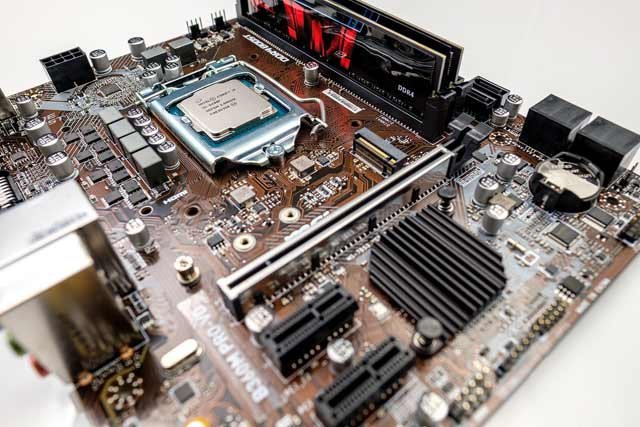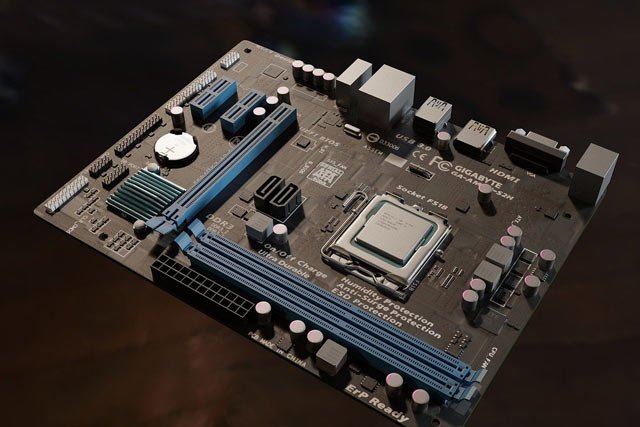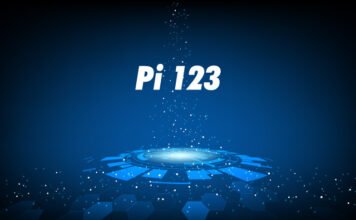The motherboard is considered the central part of a computer system. Because without a motherboard, the PC is just a big, expensive pile of machinery. It holds together some essential parts of a computer, including the RAM, CPU, and connectors for the input and output devices. The form factor, however, is the size, shape, and dimensions of an electronic. And so the types of motherboard form factors are what distinguishes one from the other based on the hard specs.
Nowadays, due to upgrades, we get to see numerous components mounted on the motherboard. This was not the case before; you will find only a few components like the CPU and card slots on the early motherboards.
However, here are some form factors of a motherboard:
- Size
- Shape
- Number of ports
- Location of mounting holes
There are numerous motherboard form factors, with the first form factor being the XT dating back to 1983. But now, the motherboard XT form factor has evolved and developed into 40 new and improved form factors. And now, there are a handful of manufacturers who produce these.
Components of a Motherboard

A motherboard is made up of many parts that combine and connect to form a fully functioning PC.
Expansion Slots
There are different expansion slots like the PCI slots or Peripheral Component Interconnect. These slots are used to install add-on cards into your system. Also, we install the Graphics card in one of these slots.
RAM slots
There are two types of single inline (SIMM) and Double inline (DIMM) memory modules. The SIMM supports a 32-bit bus, and the DIMM supports 64-bits.
CPU slot
It is also known as the CPU socket. It is a connector on the motherboard that connects the CPU.
Also Check: How To Stress Test CPU and The Best Tools To Do So
Heat Sink
Machinery tends to get hot while it is running; the same is the case with the processor. It needs to be at a cooler temperature to keep functioning properly. And it is common practice to attach a heat sink to it to keep the temps low. There are two types of coolers, air, and liquid, the latter being more aesthetically pleasing.
Power Connectors
These connectors provide the appropriate amount of power that every component requires on the motherboard, like the RAM, CPU, and expansion cards. The computer does have a power supply, but it is impossible to distribute power from the main supply; hence a connector comes in handy.
CPU Socket
The most important part of a motherboard is the CPU socket. Because we mount the processor here, it is a key component. And there are different types of sockets to ensure compatibility.
- Socket 7: It supports processors like Intel Pentium1 and 2.
- Socket 370: It supports Celeron processors and Pentium-3 processors.
- Socket 775: It supports Intel dual-core and Xeon processors.
- Socket 1156: Located on the latest types of Motherboards, it supports the latest processors.
- Socket 1366: This socket supports the latest Intel processors.
What are Motherboard form factors?

So, there are different types of motherboard form factors. But why is that? What led manufacturers to build other models of the same component?
The answer is space utilization and preference. Preference is what you want to house on your board. How many slots, an inbuilt WIFI card, the number of ram slots, and most importantly, the deciding factor, is it compatible with your processor?
The most widely used motherboard form factor is ATX; Intel manufactured this card by improving IBM’s original AT design. Other commonly motherboard form factors include,
- Micro ATX
- Mini-ATX
- BTX mini ITX
- Micro ITX
- Nano ITX,
- Micro BTX
- Extended ATX
And now, we are going to talk about the most important types of motherboard form factors
Important Types of Motherboard Form Factors

There are many names for the five different form factors, but they are most commonly known by,
- ATX
- Micro-ATX
- Mini-ITX
- Nano-ITX
- Pico-ITX
Now let’s talk about these five main types and how we can differentiate them. You will get to know what makes each of these motherboard form factors unique in its own way.
1. ATX
ATX stands for Advanced Technology eXtended. This is one of the first form factors, and manufacturers still use it. ATX board designs are used in many other smaller boards. And that’s why the dimension of a full-size ATX board is between 12 x 9.6 inches. Due to constant updates from the AT board by IBM, it has many advantages and new features compared to its predecessors. Some of these are,
- A large number of power phases to ensure cleaner and stable power.
- The right amount of clearance space for the Heatsink.
- Ample gaps between card slots to ensure better cooling for Graphics Cards.
Now, these are updates and improvements; upon buying board, one looks at some of the extra features like,
- The ATX boards have stacked I/O slots for easy access.
- Safety features like power regulation and PC do not turn off while it is in boot-up.
2. Micro ATX
The micro ATX is a reduced version of the standard ATX board with dimensions 9.6 x 9.6. Updated and newer Standard ATX boards have up to seven PCI-Express expansion slots, but the Micro ATX has a maximum of four. Moreover, its smaller form factor Micro ATX does have some benefits over the standard ATX,
- It is a budget motherboard as compared to ATX or ITX boards.
- Consume less power
- Give a cleaner PC build.
However, there are some downsides,
- Micro ATX has half the RAM slots of Standard ATX.
- They are not suited for larger video cards.
- And the most deal-breaking disadvantage is that it is unsuitable for overclocking and hardcore gaming.
So Micro ATX is suitable for people who want a PC for their home for normal browsing and media streaming. And, for the gamers out there, there are much better options.
3. Mini ITX
The sole purpose of this motherboard form factor is to save space. Because of the features, it has, enables the whole PC to have a very small form factor with an ample amount of cooling and low power consumption. Its dimensions are 6.7 x 6.7 inches, which are smaller than most standard boards. Mini ITX boards can also fit in a case made for Micro ATX and standard ATX boards. Its advantages are,
- It saves a lot of space.
- Consumes less power.
- The Overall PC build costs less in general.
Along with the space-saving feature come a lot of disadvantages.
- It cannot fit every GPU.
- Less space means less heat dispersion. This is the board’s biggest downside.
Less space for expansion - It’s all pretty much a tight fit in with the small board and GPU cooler. So, it isn’t easy to clean.
4. Nano ITX
You will find Nano ITX boards in Smart entertainment devices like Media players, DVD players, car PCs, and other thin and compact devices. They are very small and consume very little power. The dimensions for this small board are 4.7 x 4.7 inches.
Some of its advantages are,
- It is easy to integrate.
- Users can drill holes into the board according to their case fitting.
- The boards are cheap and have less power consumption.
Due to its small form factor, it has its limitations,
- Users complain that it does not support enough RAM.
- You cannot do much with a board of this size. This means the processing power is limited.
5. Pico ITX
This motherboard form factor may look small with its 10 x 7.2 cm size. Still, it has a lot of power that results in this Board being in modern medical machinery. This form factor promises to deliver a more powerful technology piece in an enhanced compact design that makes it ideal for telecommunication industries and medical machinery. Its features are,
- It consumes less power due to the exceptionally small size.
- It is portable.
Constant upgrades have made it possible for this board to replace standard large boards.
One of its main issues is less processing power. We all know heat and small size do not mix well, but surprisingly the Pico ITX boards handle heat pretty well.
Motherboard Form Factors: Conclusion
I hope the information I provided helps you with choosing the right board for your build. Whether you are a gamer or a light user, there is an option up there just for you.
There are tons of information on motherboard form factors. Motherboards are an essential part of your PC.
Choosing a certain board also limits the choice of the components, like the RAM and the processor. I advise you to take all things into account and always check your desired components’ compatibility with each other. The purpose of this article was to give you the right amount of knowledge to help you in the future.





